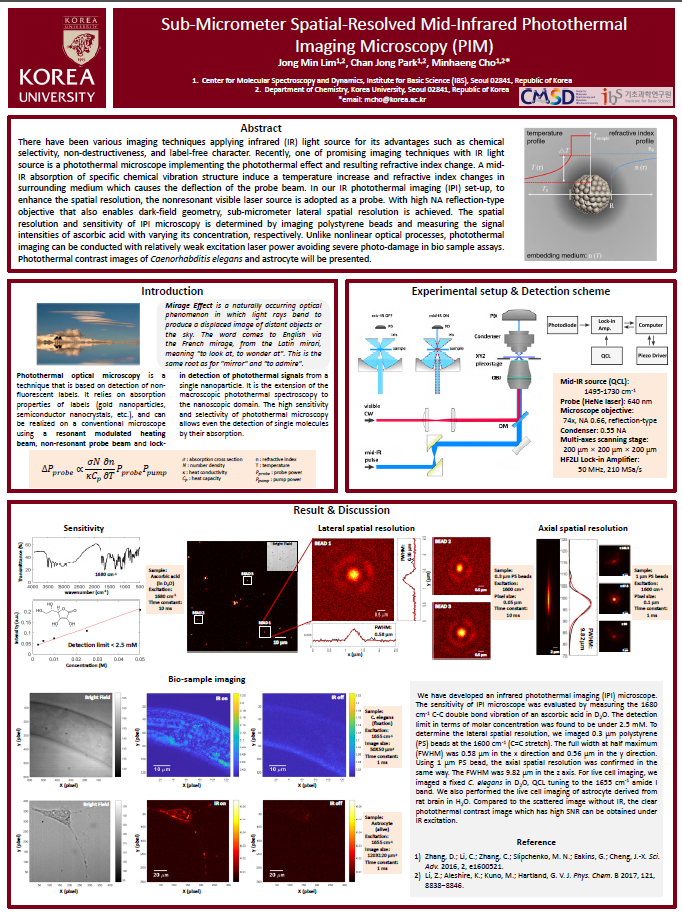mainmenu
Sub-Micrometer Spatial-Resolved Mid-Infrared Photothermal Imaging Microscopy (PIM)
IUPAC 2018

Infrared (IR) microscopy is an ideal tool for bioimaging applications, which is label-free and non-perturbative with intrinsic chemical selectivity. However, the spatial resolution of IR imaging technique is still limited by the Abbe’s diffraction limit. To utilize mid-infrared (MIR) light source for biological imaging, a photothermal microscope is introduced with a scheme of MIR pump and visible probe beams.[1-3] A vibrational excitation of specific chemical structure induces a thermal gradient and the resulting changes in the refractive index of the surrounding medium causes the deflection of the probe beam. In our photothermal imaging microscope (PIM), a MIR beam generates photothermal effect in the spectral range of 1500-1730 cm-1, while the non-resonant visible probe laser (640 nm) is utilized to obtain a sub-micrometer spatial resolution. Employing a high NA (0.75) reflection-type objective that also enables dark-field geometry, sub-micrometer lateral spatial resolution is achieved that enable to observe polystyrene bead of 500-nm diameter. With the diffraction-limited spatial resolution, a detection sensitivity of MIR PIM is estimated by measuring the signal intensities of ascorbic acid with varying concentration. Unlike nonlinear optical processes, photothermal imaging can be conducted with relatively weak excitation laser power and peak intensities avoiding severe photo-damage in bio sample assays. We further demonstrated in vivo PIM imaging of proteins in Caenorhabditis elegans and amyloid aggregates.
[1] Mërtiri, A.; Totachawattana, A.; Liu, H.; Hong, M.K.; Gardner, T.; Sander, M.Y.; Erramilli, S. Conference on Lasers and Electo-Optics Europe – Technical Digest, 2014-January, art. No. 6988065.
[2] Li, Z.; Kuno, M.; Hartland, G. Proceedings of SPIE – The international Society for Optical Engineering, 2015, art. No. 954912.
[3] Zhang, D.; Li, C.; Zhang, C.; Slipchenko, M.N.; Eakins, G.; Cheng, J.-X. Sci. Adv. 2016, 2, e1600521.


